G.G. Malinetskiy
Keldysh Institute of Applied Mathematics, Russian Academy of Sciences
Dear deputies of the State Duma, colleagues!
I represent here Keldysh Institute of Applied Mathematics, Russian Academy of Sciences.
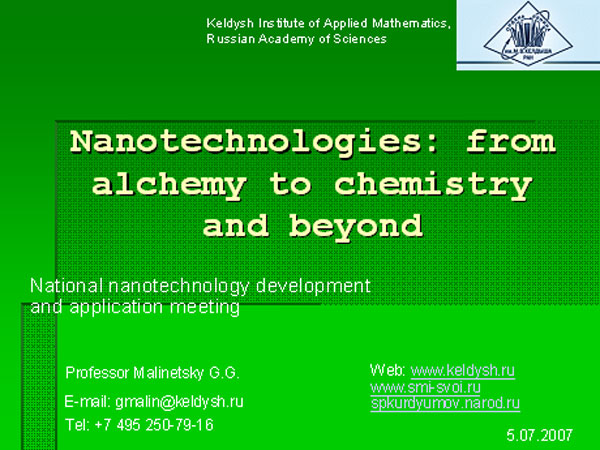 |
The founder and the first of our institute was triple Hero of Socialist Work academician Mstislav Vsevolodovich Keldysh. Our institute was created for solving of strategic problems of Soviet Union. Existence of our country depended on their successful solution.
The key projects accomplished in our institute were modification of nuclear weapon, mathematical calculations for space flights, development of control systems for complex objects. Our institute worked in tight collaboration with groups headed by academicians Igor Vasil’evich Kurchatov and Sergey Pavlovich Korolev
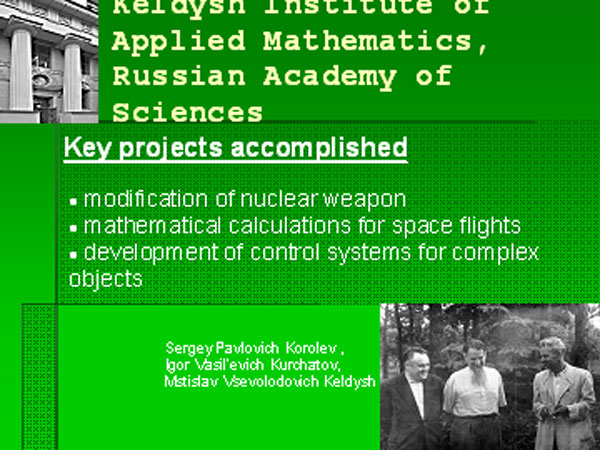 |
Our institute participates in the nanotechnology program, so our opinion on these problems can be considered as objective expertise. Let me start with conclusions
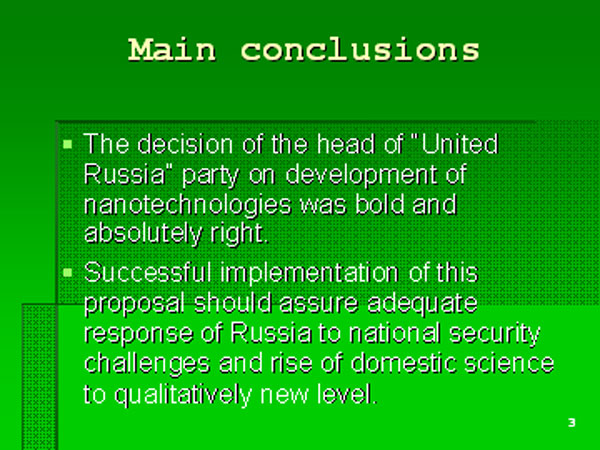 |
We think that the decision of the head of “United Russia” party on development of nanotechnologies was bold and absolutely right. Successful implementation of this proposal should assure adequate response of Russia to national security challenges and rise of domestic science to qualitatively new level.
However, realization of this project is very complex task which demands managers, researches, representatives of civil and defense industries to exert their every effort .
Current development of nanotechnology repeats in some sense development of chemistry
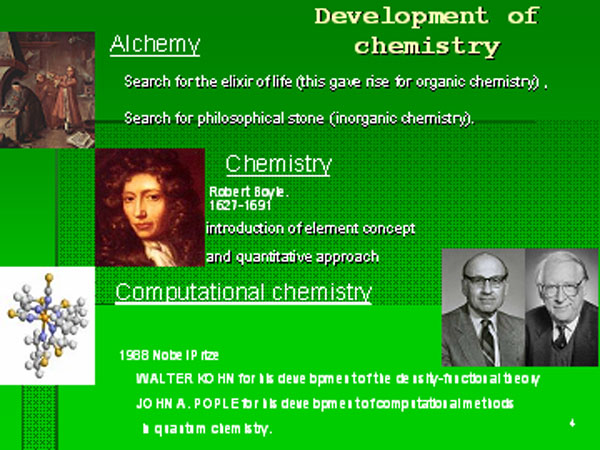 |
From II till XVII centuries alchemy evolved. Alchemists had a goal to create the elixir of life giving immortality (this gave rise for organic chemistry), and philosophical stone allowing conversation of lead to gold (this area of research promoted development of inorganic chemistry). Alchemy was tied with mystic, magic, big money, failed hopes, and excess of charlatans. Robert Boyle (1627 — 1691) had founded chemistry as science by introduction of element concept and quantitative approach. Mystical problems of alchemy were replaced by objective problems of chemistry.
The next stage began with introduction of sophisticated mathematical models, and creation of computational chemistry (1998 Nobel prize was received by mathematicians). Today drugs design and search for active molecular sites are impossible without complex quantum-mechanical calculations which require mathematical models, software and super-computers.
In our viewpoint at the moment nanotechnologies are at the alchemy stage. Core problems of the field are not recognized, moreover an understanding of a number of important issues and required mathematical models are missing.
Emergence of nanoscience was strongly affected by fantastic idea of outstanding physicist Richard Feynman in 1959
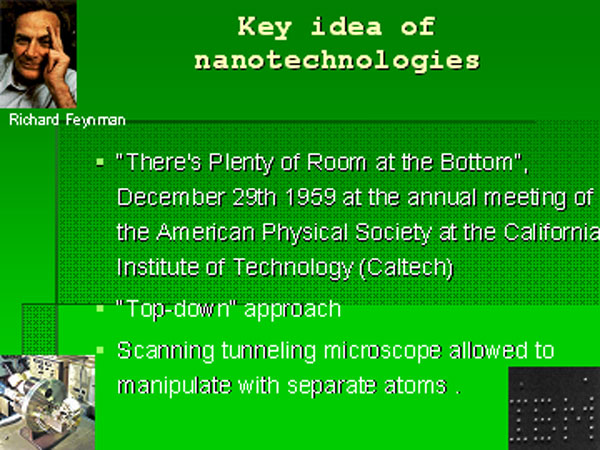 |
He proposed to create the machines able to build smaller ones which should be able to build smaller ones etc. In other words he supported top-down approach from macro- through micro- to nano-objects. However the things went another way. On the first stage tunneling microscope (macro-object) allowed to manipulate with separate atoms (nano-objects). It was scientific breakthrough but not technology.
An idea of nanoparticles manipulation and building of nanostructures without fundamental research can be called nano-alchemy. This approach yields interesting and promising results. Applications developed at the Demidov Yaroslavl State University can served as demonstration of such results
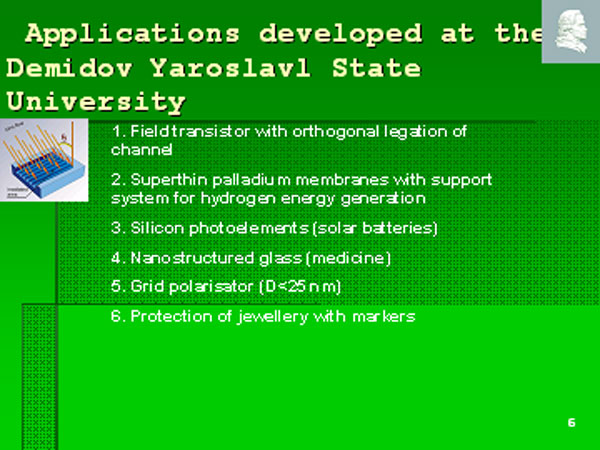 |
But main nanotechnology prospect concerns with not ability to move top-down but ability to move bottom-up, i.e. to grow nanostructures, nanomaterials, nanoobjects. Nanotechnology requires large quantities of matter and assembling them by atom is impossible. Hence, there are three keys to nanotechnology
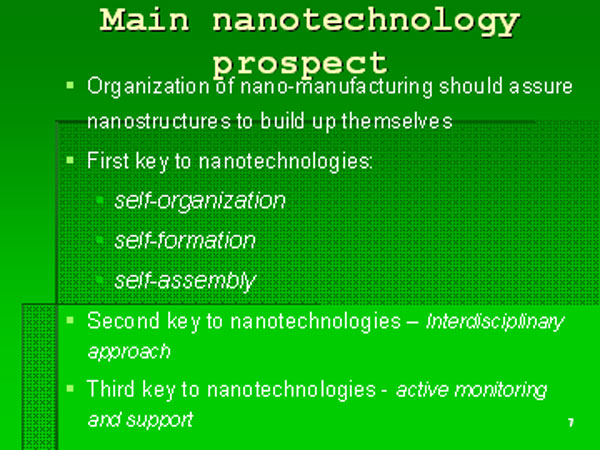 |
- Organization of nano-manufacturing should assure nanostructures to build up themselves. In other words, it should be based on the self-organization , self-assembly and self-formation .
- Collaboration of physics, mathematics, biologists is required to solve nanotechnology problems. Interdisciplinary approach consisting of common language, concepts and models is inescapable. This should provide wide view on what we can, what we need and, more important, what we should escape. Here the key role is devoted to design for a future , the future with more closely tied technological, economical, political, security and social problems. This is conditioned by absolutely new technological possibilities.
- Nanotechnology should find its place in economics to fit in existing economic cycles and create new. Only in this case nanotechnology goes from science fiction to reality. This requires active monitoring and support on all stages from laboratory to market. This is qualitatively new level of management which allows solving economic and organizational problems of unprecedented complexity. Just imagine that new industries will be born out not every decade but every year.
Theory of self-organization or synergetics is actively developing today. There are important and valuable results, created interesting models
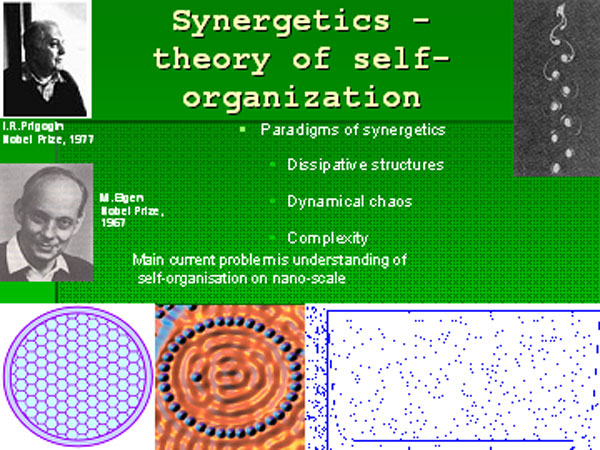 |
But all this is related to macroscale. Study of nanoscale self-organisation mechanics just begins. Nanoscience should grow with acceleration to make nanotechnologies practical. Other important problem is education. At the moment book series “Synergetics: from the past to the future” on the theory of self-organization or synergetics is published by URSS. Every day about 60 books of this series are sold over the country. But it is too little. Our attempts to organize courses on nanoscience, computer simulation of nanoprocesses, synergetics at the Moscow State University and Moscow Institute of Physics Technology failed. We foresee that ambitious nano-project will encounter severe deficit of qualified specialists which could not be covered even by unlimited funding.
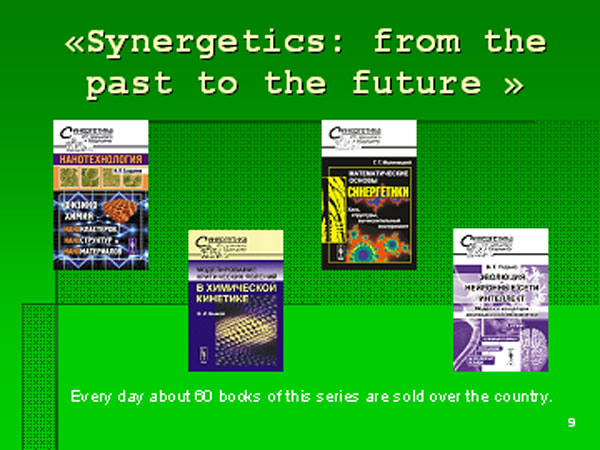 |
One more example. Nanostructures give possibility to create materials with unprecedented properties. They provide principal possibilities to make objects invisible. These works are based onmetamaterials which existence was predicted by Viktor Georgievich Veselago in 1967. This Nobel prize level work was noted and valued only 40 years later. But today this work determines development of large field in nanophysics. However unique computer simulations are needed to design nanomaterials . There are results of wave propagation calculation in this material on the slide
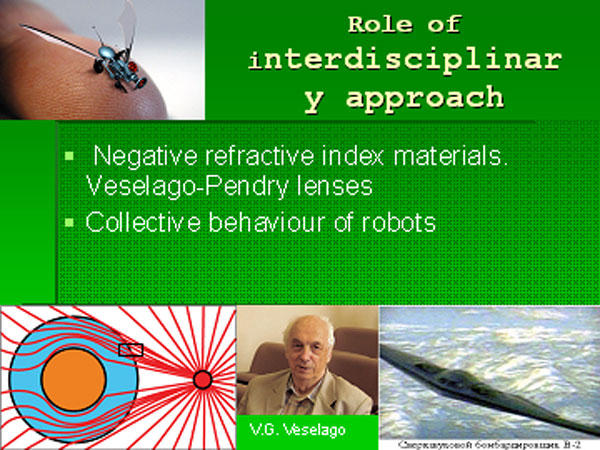 |
These calculations were performed at the Keldysh Institute of Applied Mathematics with utilization of new models, principally new algorithms and multiprocessor supercomputer
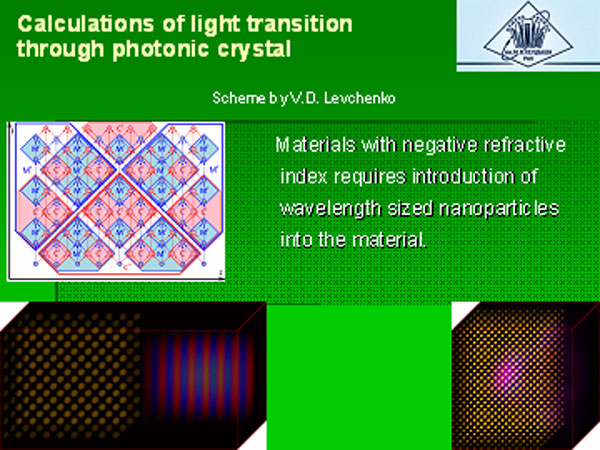 |
We have no information that such calculation can be performed in other organizations over the world.
Implementation of Veselago’s idea requires introduction of wavelength sized nanoparticles into the material. The same idea is basic for the photonic crystals which are an objects allowing masking and effectively control falling light.
There are series of work related to nanotechnologies at the Keldysh Institute of Applied Mathematics
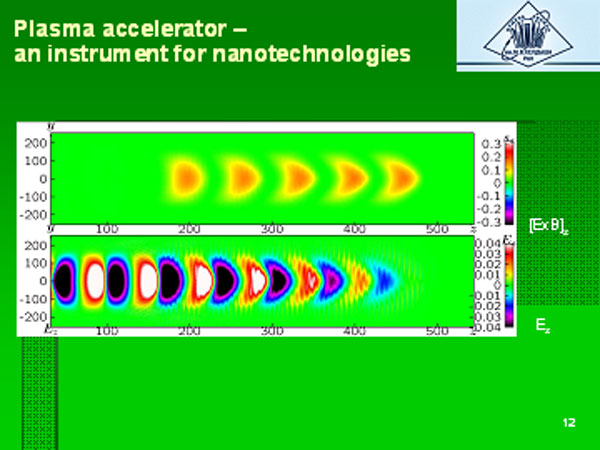 |
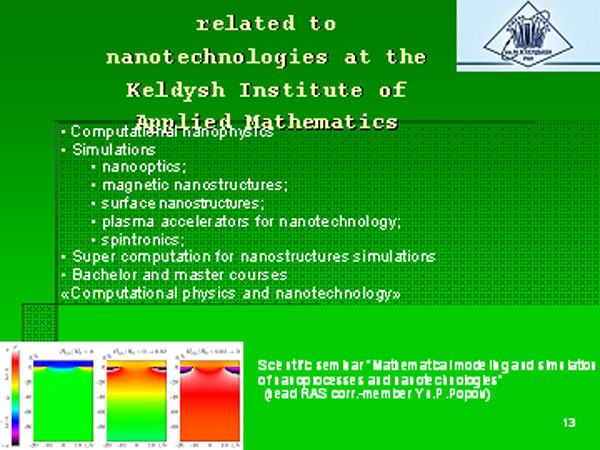 |
(slides 12-13).
There are key ingredients of nanoscience and nanotechnology
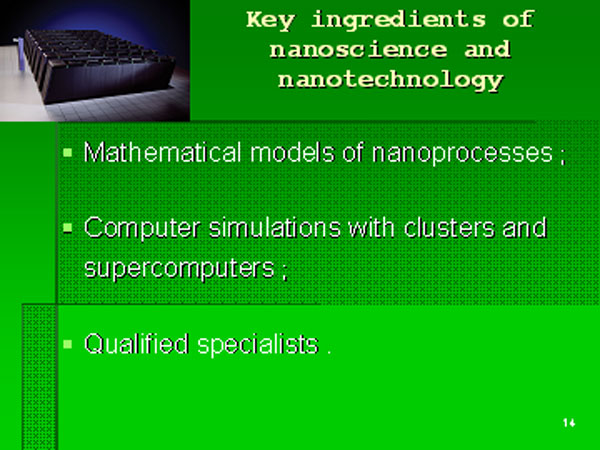 |
- Mathematical models of nanoprocesses;
- Computer simulations with clusters and supercomputers;
- Qualified specialists.
In neuroscience one can start with simplest structures – atoms and proceeds to creation of complex systems. But there is another way; one should understand complex systems at the first, understand what we want to construct and on what principles, and then search for adequate building blocks at the nanoscale. At the USA this area of research is called NanoBioInfoCogno. These problems were studied by famous mathematicians such as John von Neumann (theory of self-reproducing automata), Alan Turing (computational complexity), and physician Roger Penrose (physical foundations of mind)
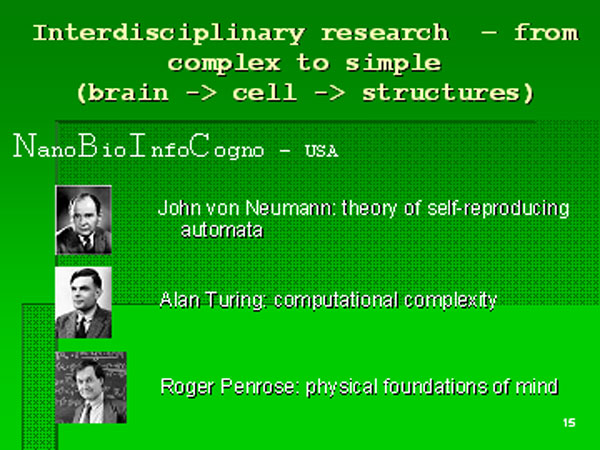 |
On this interdisciplinary boundary new areas of applied mathematics emerge. These areas open qualitatively new possibilities. There are only few enthusiasts working in these areas in our institute and Russia
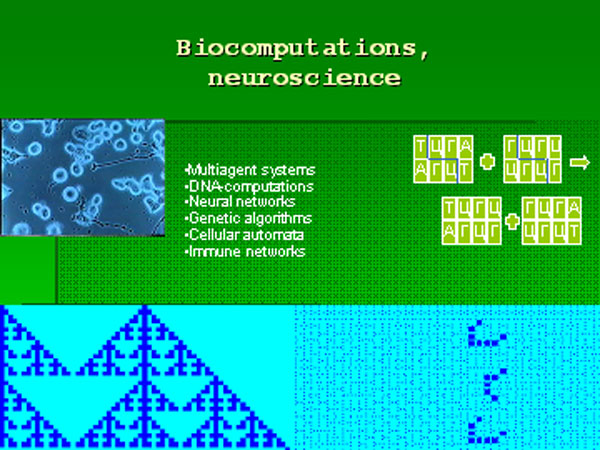 |
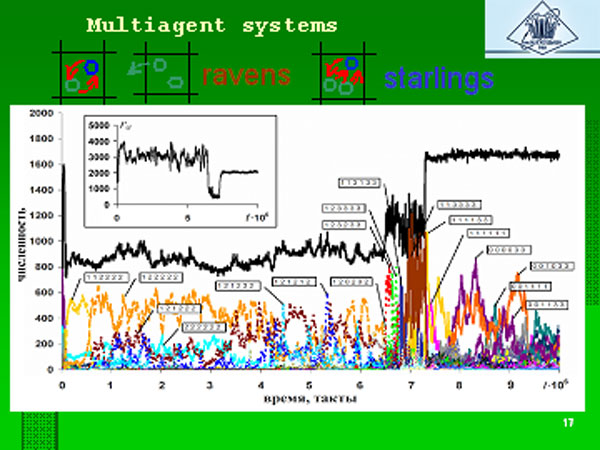 |
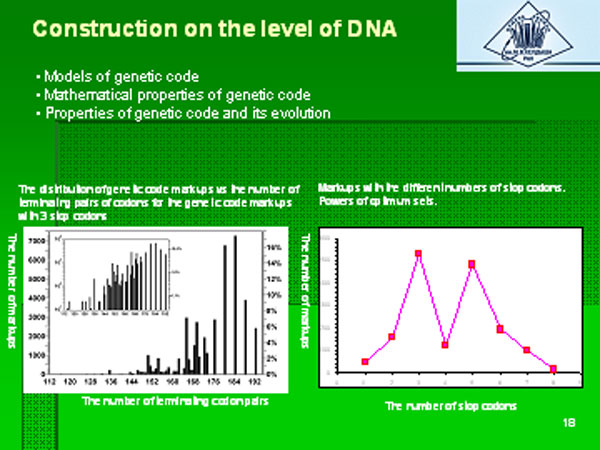 |
I want to attract your attention to the main threat connected with nanotechnologies. This threat is arms race on nanoscale . Biorobots in the field of security might become more powerful than nuclear or space projects. Here we say about possibility to targeted murder of groups of people or even separate man with selection based on professional, ethnical or genetic criteria. All these will provide unprecedented possibilities for control over man.
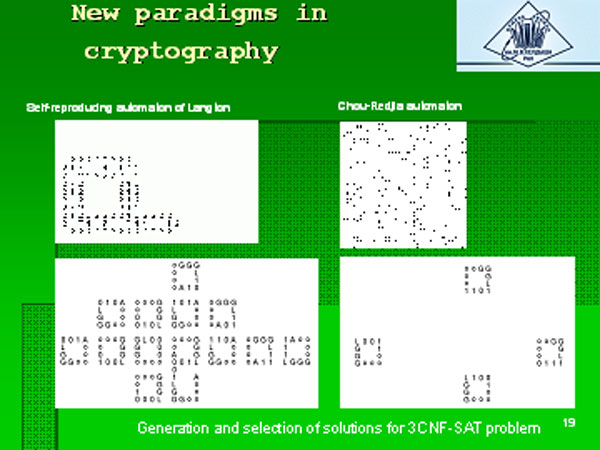 |
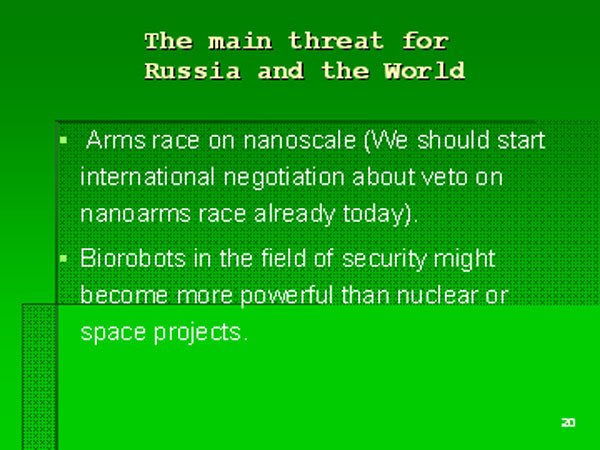 |
In the future nanotechnologies will allow modification of human species. All this raise the issue of asymmetrical reply in the sphere of national security. We should start international negotiation about veto on nanoarms race already today.
Let me emphasize some features of project implementation. Innovations reproduction cycle consists of basic research, applied research, technology design and marketing. Part of nano-industry income should be invested in education and research. There is 1:10:100 ratio for basic, applied research and technology design
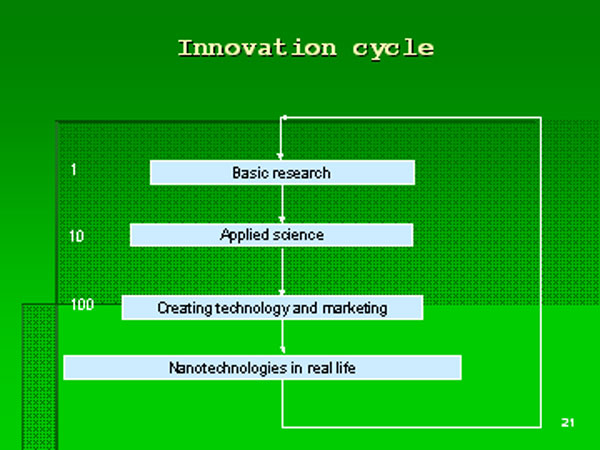 |
Current problem of national industry and nanotechnology is in particular caused by collapse of applied research and firms able to sell high technological product in Russia and worldwide. And if we are speaking seriously these two parts of the chain should be created anew, the first one from scratch, and the second one in the first time in national history.
At the moment we have no one ruble for nanoscience at the most upper level of reproduction cycle – basic research. All the examples above were based on initiative or abroad research.
It should be noted that Russian economical, technological, educational and scientific specifics are not allowing for blind transfer of US scenario of nanotech development
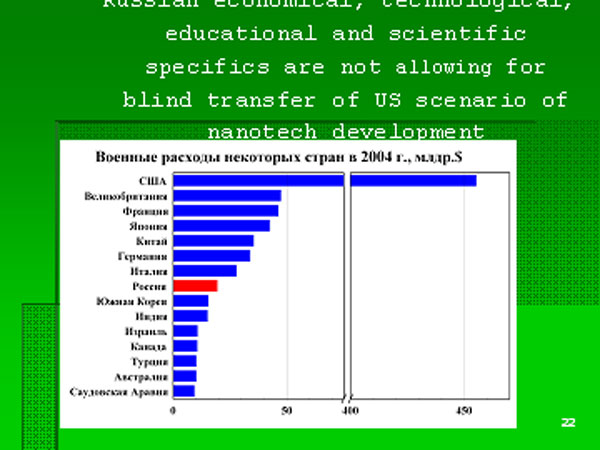 |
It is important to know what is desired role of Russia on the global nanotech market
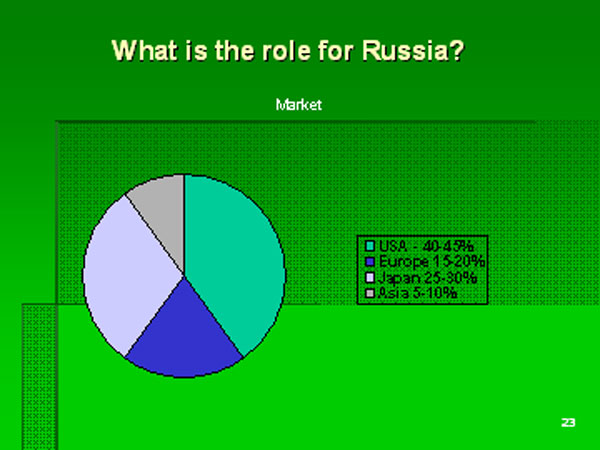 |
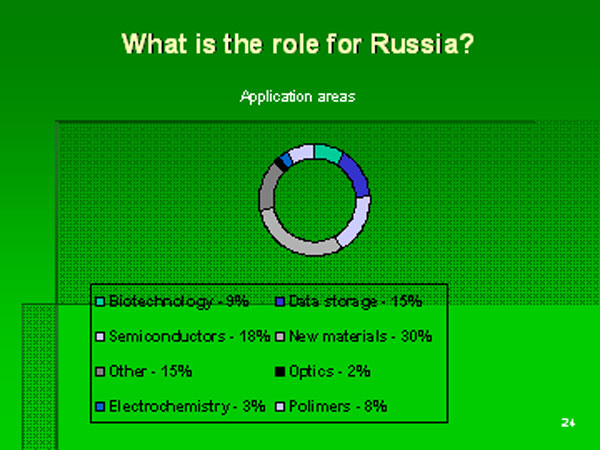 |
Let make a conclusions .
There are few threats for “United Russia” concerned with nanotech project
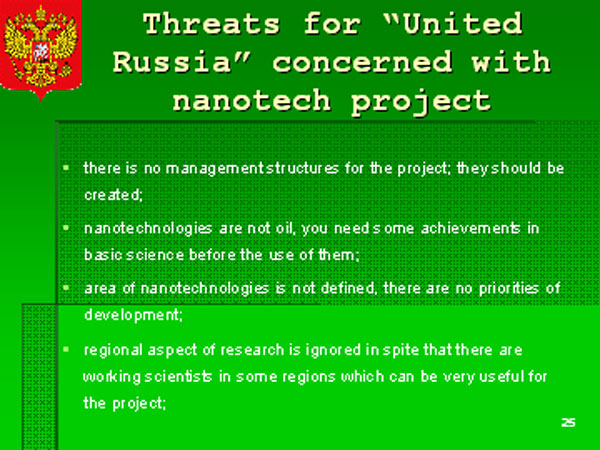 |
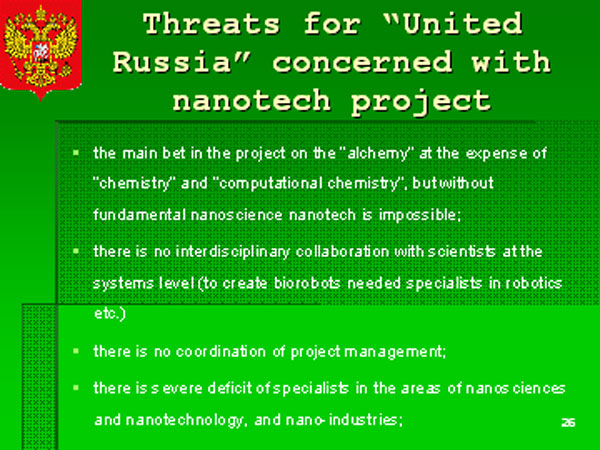 |
Progress of the project will be associated by citizens with decisions supported by party. The success will be beneficial for party and the failure will discredit it. There are following serious threats:
- there is no management structures for the project; they should be created;
- nanotechnologies are not oil, you need some achievements in basic science before the use of them;
- area of nanotechnologies is not defined, there are no priorities of development;
- regional aspect of research is ignored in spite that there are working scientists in some regions which can be very useful for the project;
- the main bet in the project on the “alchemy” at the expense of “chemistry” and “computational chemistry”, but without fundamental nanoscience nanotech is impossible;
- there is no interdisciplinary collaboration with scientists at the systems level (to create biorobots needed specialists in robotics etc.)
- there is no coordination of project management;
- there is severe deficit of specialists in the areas of nanosciences and nanotechnology, and nano-industries;
